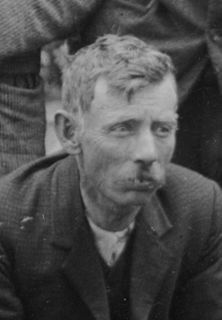Brian Garner Wybourne | |
|---|---|
 | |
| Born | 5 March 1935 Morrinsville, New Zealand |
| Died | 26 November 2003 (aged 68) |
| Residence | New Zealand, Poland |
| Alma mater | Canterbury University College |
| Awards | Hector Medal (1970) |
| Scientific career | |
| Fields | Physics |
| Institutions | University of Canterbury Nicholas Copernicus University |
| Thesis | An analysis of the solid state spectra of trivalent rare-earth ions (1960) |
| Academic advisors | Alan Runciman |
Brian Garner Wybourne (5 March 1935 – 26 November 2003) was a New Zealand physicist known for his work on the energy levels of rare-earth ions.
Born in Morrinsville in 1935, Wybourne attended Canterbury University College, graduating with an MSc with second-class honours in 1958 and a PhD in 1960. [1]

Morrinsville is a provincial town in the Waikato region of New Zealand's North Island, with a population of approximately 7,000 in the 2013 Census. The town is located at the northern base of the Pakaroa Range, and on the south-western fringe of the Hauraki Plains. Morrinsville is around 33 kilometres east of Hamilton and 22 kilometres west of Te Aroha. The town is bordered by the Piako River to the east and the Waitakaruru Stream to the south.

The University of Canterbury is New Zealand's second oldest university.
After post-doctoral research positions at Johns Hopkins University and Argonne National Laboratory in the United States, Wybourne returned to the University of Canterbury in 1966 to take up a professorship in physics. [2] He served as the head of the physics department from December 1982 to November 1989. [3] In 1991 he was a visiting professor at the Nicholas Copernicus University in Toruń, Poland, and decided to remain there permanently. [2]

The Johns Hopkins University is a private research university in Baltimore, Maryland. Founded in 1876, the university was named for its first benefactor, the American entrepreneur, abolitionist, and philanthropist Johns Hopkins. His $7 million bequest —of which half financed the establishment of Johns Hopkins Hospital—was the largest philanthropic gift in the history of the United States up to that time. Daniel Coit Gilman, who was inaugurated as the institution's first president on February 22, 1876, led the university to revolutionize higher education in the U.S. by integrating teaching and research. Adopting the concept of a graduate school from Germany's ancient Heidelberg University, Johns Hopkins University is considered the first research university in the United States. Over the course of several decades, the university has led all U.S. universities in annual research and development expenditures. In fiscal year 2016, Johns Hopkins spent nearly $2.5 billion on research.

Argonne National Laboratory is a science and engineering research national laboratory operated by the University of Chicago Argonne LLC for the United States Department of Energy located in Lemont, Illinois, outside Chicago. It is the largest national laboratory by size and scope in the Midwest.

Toruń is a city in northern-central Poland, on the Vistula River. Its population was 202,562 as of December 2017. Previously it was the capital of the Toruń Voivodeship (1975–98) and the Pomeranian Voivodeship (1921–45). Since 1999, Toruń has been a seat of the self-government of the Kuyavian-Pomeranian Voivodeship and, as such, is one of its two capitals. The cities and neighboring counties form the Bydgoszcz–Toruń twin city metropolitan area. Toruń itself is the sixteenth-largest city in Poland and the second in the voivodeship.
He was elected a Fellow of the Royal Society of New Zealand in 1970, [4] and the same year he won the society's Hector Medal, the highest award in New Zealand science at that time. [5]



